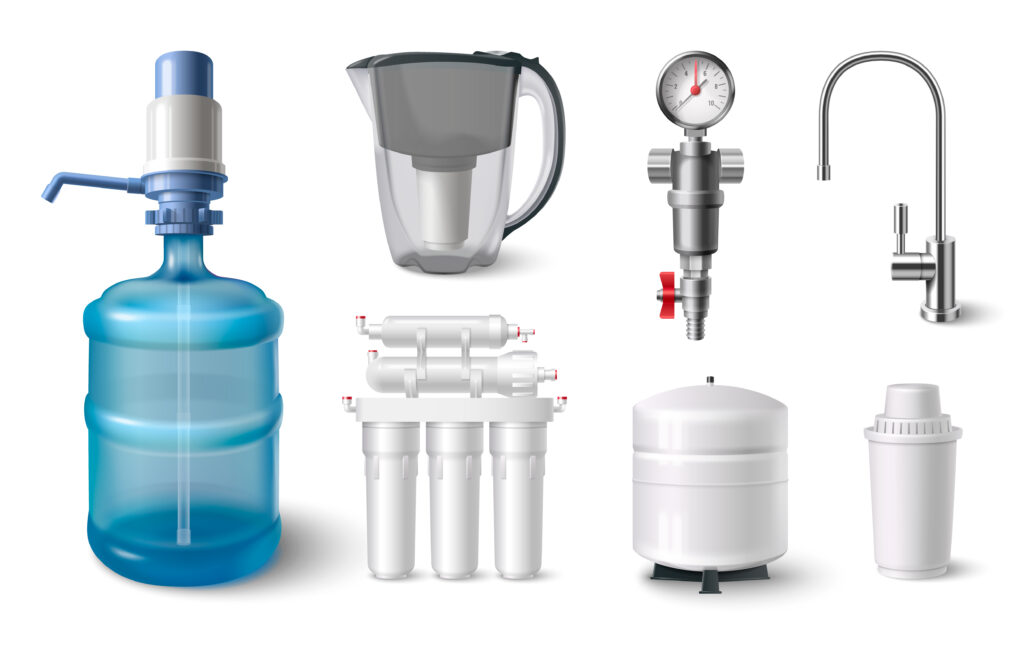In today’s world, clean and safe drinking water is a fundamental necessity. With a variety of water filtration technologies available, choosing the right one can be overwhelming. This blog will guide you through the different water filtration technologies, helping you make an informed decision for your needs.
Why is Water Filtration Important?
Before diving into the technologies, it’s crucial to understand why water filtration matters. Contaminants in water can include bacteria, viruses, chemicals, and heavy metals. Effective water filtration ensures that these impurities are removed, making your water safe to drink and use. It also enhances the taste and odor of your water.
Common Water Filtration Technology
1. Activated Carbon Filters
Activated carbon filters are among the most common and widely used filtration systems. They work by adsorbing impurities onto a carbon surface. Here’s a closer look:
- How They Work: Activated carbon filters use a porous form of carbon to trap contaminants through adsorption. This process is effective at removing chlorine, volatile organic compounds (VOCs), and other chemicals that can affect taste and odor.
- Advantages: They improve water taste and odor, are relatively inexpensive, and are easy to install.
- Limitations: They do not remove dissolved minerals, salts, or microorganisms effectively.
Best For: Households looking to improve taste and remove chlorine from their tap water.
2. Reverse Osmosis (RO) Systems
Reverse osmosis is a more advanced filtration technology that removes a wide range of contaminants. It’s commonly used for purifying drinking water.
- How It Works: RO systems use a semipermeable membrane to remove impurities. Water is forced through the membrane, leaving contaminants behind.
- Advantages: RO systems are highly effective at removing contaminants such as lead, arsenic, fluoride, and nitrates.
- Limitations: They can be expensive, produce waste water, and may strip water of beneficial minerals.
Best For: Those needing high-level purification, especially in areas with water quality issues.
3. UV Water Purifiers
UV (ultraviolet) water purifiers use UV light to kill bacteria, viruses, and other microorganisms.
- How They Work: UV light disrupts the DNA of microorganisms, rendering them inactive and unable to reproduce.
- Advantages: Effective against microorganisms, easy to maintain, and chemical-free.
- Limitations: UV purifiers do not remove chemical contaminants or sediments.
Best For: Households looking to ensure microbial safety without changing the taste or chemical composition of the water.
4. Distillation Systems
Distillation is a process that involves boiling water and then condensing the steam back into liquid, leaving contaminants behind.
- How It Works: Water is boiled, and the steam rises, leaving impurities. The steam is then cooled and collected as distilled water.
- Advantages: Highly effective at removing minerals, metals, and microorganisms.
- Limitations: It’s slow, uses a lot of energy, and removes beneficial minerals.
Best For: Those needing thorough purification, particularly in areas with high levels of mineral contamination.
5. Ceramic Filters
Ceramic filters use a porous ceramic material to filter out contaminants.
- How They Work: Water passes through the ceramic material, which has tiny pores that trap bacteria, sediment, and other impurities.
- Advantages: Durable, easy to clean, and effective at filtering out microorganisms.
- Limitations: May not remove dissolved chemicals or salts.
Best For: Situations where durability and microorganism removal are priorities.

Choosing the Right Water Filtration System for You
Selecting the best water filtration technology depends on various factors:
- Water Quality: Test your water to identify contaminants. This will help determine which filtration technology is most suitable.
- Budget: Consider the initial cost and long-term maintenance expenses. Some systems, like RO, have higher upfront costs but offer comprehensive purification.
- Installation and Maintenance: Evaluate how much effort you’re willing to invest in installation and upkeep.
- Specific Needs: Determine if you need to address specific contaminants or just improve taste and odour.
Conclusion
Understanding the different water filtration technologies is essential for ensuring you choose the right system for your needs. Activated carbon filters, reverse osmosis systems, UV purifiers, distillation, and ceramic filters each have their strengths and limitations. By assessing your water quality, budget, and specific requirements, you can make an informed decision that ensures clean, safe, and great-tasting water for you and your family.
FAQ’s
1. What is the best water filtration technology for removing heavy metals?
Reverse Osmosis (RO) systems are highly effective for removing heavy metals such as lead, arsenic, and mercury. The RO membrane is capable of filtering out these contaminants, making it a good choice if heavy metal removal is a priority for you.
2. How often should I replace the filters in my water filtration system?
The frequency of filter replacement depends on the type of system you have and the quality of your water. Generally:
- Activated Carbon Filters: Replace every 6-12 months.
- Reverse Osmosis Membranes: Replace every 2-3 years.
- UV Lamps: Replace every 12 months.
- Ceramic Filters: Clean regularly and replace every 6-12 months if needed.
Always check the manufacturer’s recommendations for specific guidance.
3. Can I use multiple filtration technologies together?
Yes, using multiple filtration technologies can provide more comprehensive purification. For example, a combination of activated carbon filters and reverse osmosis systems can address both chemical contaminants and dissolved solids. Combining technologies allows you to tackle a broader range of impurities.
4. Do water filtration systems remove beneficial minerals from water?
Some systems, like reverse osmosis and distillation, can remove beneficial minerals such as calcium and magnesium. If you are concerned about mineral loss, consider a system with a mineral filter or a remineralisation stage to add essential minerals back into the water.
5. Are there any maintenance requirements for UV water purifiers?
Yes, UV water purifiers require regular maintenance. The UV lamp should be replaced annually, and the system needs to be cleaned periodically to ensure optimal performance. Regular maintenance helps keep the UV purifier effective at killing microorganisms.
6. What should I do if my water filter system is not working properly?
If your water filter system is not working as expected:
- Check for Blockages: Inspect and clean the filters if they are clogged.
- Verify Installation: Ensure that all components are installed correctly.
- Replace Filters: If filters are overdue for replacement, replace them.
- Consult a Professional: If problems persist, contact a water filtration expert for diagnosis and repair.
7. Is it necessary to test my water before choosing a filtration system?
Yes, testing your water is crucial for selecting the right filtration system. A water test will reveal the specific contaminants present, which helps you choose a system that effectively addresses those issues. Many water treatment companies offer water testing services.
8. Can water filtration systems improve the taste and odour of my water?
Yes, many filtration systems, especially those with activated carbon filters, are designed to improve the taste and odor of water. Activated carbon effectively removes chlorine, sediments, and organic compounds that can affect water flavour and smell.
9. Are there any water filtration options that don’t require installation?
Yes, there are point-of-use options like water pitcher filters and faucet-mounted filters that do not require permanent installation. These systems are convenient and easy to use, though they may have limited capacity and functionality compared to more advanced filtration systems.
10. How do I know which water filtration system is right for me?
To determine the right water filtration system, consider:
- Contaminants: Test your water to identify specific impurities.
- Budget: Evaluate both initial costs and ongoing maintenance.
- Capacity: Choose a system that fits your household’s water usage.
- Preferences: Decide if you need additional features like mineral addition or UV purification.
By understanding your needs and researching your options, you can select a filtration system that best meets your requirements.





